My vegan Thai green curry, or gaeng keow waan (แกงเขียวหวานวีแกน), uses traditional Thai eggplant and plant based beef, but the curry base is a good palette for whatever you've got knocking about in the fridge.
Jump to Recipe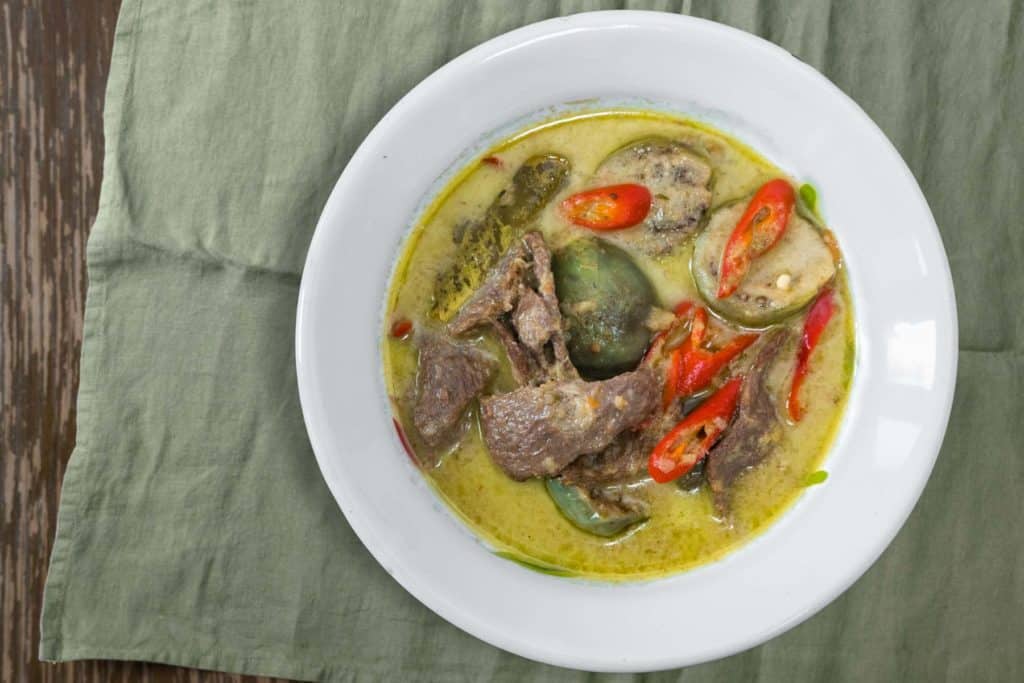
Jump to:
The world under coronavirus, even in these more positive looking times, has the tendency to leave days feeling shapeless. I feel fortunate to enjoy cooking so much, that I crave hours on my feet in the kitchen. How fortunate I am to love to cook, an act that is functional in that it is both necessary and brings form to my existence.
I try to cook something each day, even – no, especially – when I'm at my lowest, because it is the only act guaranteed to at the very least level what feels like a perpetually downward slope. These are the days I crave comfort, where little appeals more than a steaming bowl of rice. And with rice comes added promise: the joy of settling down with my notebook to plan what I will serve alongside that granular centrepiece. Kaeng keow waan made with freshly pounded curry paste often tops the list.
One of the most well known Thai dishes outside of Thailand, gaeng keow wan is popular with good reason. Unlike most red curry pastes (save some outliers), which utilise dried red chillies, green curry paste is brightly vegetal from the inclusion of fresh chillies. Incidentally this is why I argue any green curry will be infinitely better when made from a homemade batch of curry paste.
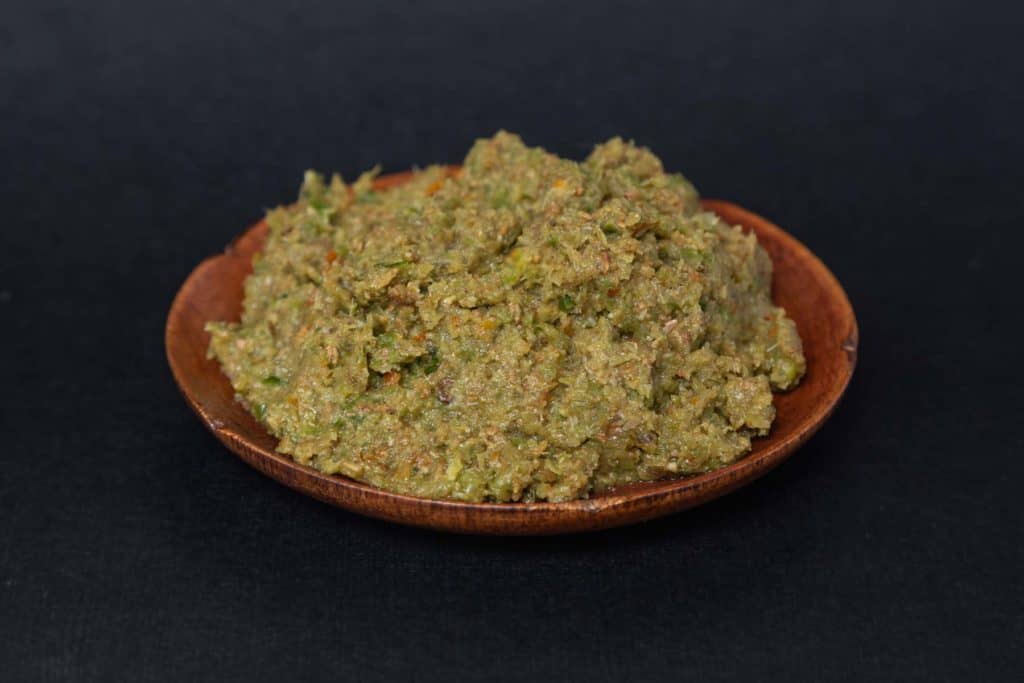
If spending half an hour making your own green curry paste is too much to stomach, however, then just buy a jar. There is some degradation in the verdurous quality of green curry made with store bought paste, but it will still be good.
Textural & visual components of a green curry
More often than not my preferences do not favour the overly creamy curries the Western imagination conjures as representative of Thai cuisine. When it comes to green curry I prefer a thinner broth with an oily texture to coat the rice. My vegan Thai green curry recipe straddles both styles and can be adjusted to suit your preference. For more details please see my guide on how to make Thai coconut curries, specifically the bit on the difference between coconut milk and coconut cream.
Gaeng keow wan is a khaki coloured soup dappled with green oil. If you have ever been served a bright green curry, it's due to unnecessary blending of coriander, pepper leaves or (less offensively) Thai basil. I can only assume this is to meet customer's demands when they expect emerald upon reading the word green.
Other suggested vegan curry add ins
While my recipe below is for vegan Thai green curry with apple aubergine and faux beef, don’t let a lack of those ingredients stop you from making the recipe. You can use any number of ingredients for bulking up the curry.
I like to keep things simple when it comes to curry add-ins. I'm not a great fan of vegetable medly curries and nor would you find these so commonly in Thailand as in the West, but there is no hard and fast rule here. My advice is to have a peek inside your fridge to see what's available and to ideally select just 2-3 fillings, preferably at least one protein and one vegetable. If I have no fresh veg to hand, I usually raid my freezer for vegan fish balls.
kaeng keow waan with mock fish balls and fried tofu
Here are a few suggestions for ingredients you can add to your vegan kaeng keow wan.
- mushroom and jerusalem artichoke
- vegan fish balls and shredded finger root
- mock beef and apple or pea eggplants
- vegan chicken and Thai apple eggplants
- tofu puffs and bamboo shoots
- Faux fish, in which case you could swap the Thai basil for holy basil
- Faux pork and hearts of palm
- whatever you want
What doesn’t go in green curry
No one has a right to police what you do and don’t enjoy eating, but there are some ingredients I see individuals who are unfamiliar with Thai food add to their green curry recipes. You would not see these additions in Thailand.
- Bucketfuls of fresh coriander. Save this for your yam salads or to serve with tom yam soup.
- Fresh lime. Citrus doesn’t go in coconut curries unless it’s a special curry like nam prik for kanom jeen or makrut limes in gaeng tae po. The ever pervasive narrative that all Thai dishes must be a balance of sweet, salty, spicy, and sour is reductive and untrue. You can achieve balance, should you desire, by having a salad with a sour dressing alongside your curry.
- Boatloads of sugar. Yes, waan translates to “sweet,” but the sweetness is derived from coconut cream. Green curries are designed to be salty and spicy (but of course if you like it sweet then whatever, add your sugar). I like a tiny bit of palm sugar for balance, but that’s it (and even that might be controversial in some circles).
📖 Recipe
Vegan Thai green curry with aubergine (Thai eggplant) and faux beef + green curry paste recipe
Equipment
- Pestle and mortar
Ingredients
Green curry paste ingredients
- 1 ½ teaspoons coriander seeds
- ½ teaspoon cumin seeds
- ¼ teaspoon white peppercorns
- ¼ teaspoon salt
- 10-15 green bird’s eye chillies (a few red are fine)
- 2-3 long green Thai, Dutch, jalapeño, serrano, or other larger green chilli on the milder end of the Scoville scale (approx 30 grams)
- 2 tablespoons finely sliced lemongrass from lower bit of stem with purple rings only (15 grams)
- 1 tablespoon finely chopped galangal (7 grams)
- 1 teaspoon makrut lime zest or finely minced peel
- 2 teaspoons chopped coriander root or 3 teaspoons chopped coriander stem
- 2 tablespoons minced garlic (17 grams)
- ¼ cup finely sliced shallot (25 grams)
- 1 ½ teaspoons vegetarian shrimp paste see notes1
Green curry ingredients
- 150 grams Thai green aubergine also called apple eggplant
- Acidulated water see notes2
- 60 millilitres thick coconut milk or cream
- 1 tablespoon virgin coconut oil or vegetable oil
- 50 grams green curry paste (about 2 ½ tablespoons)
- 250-300 millilitres thin coconut milk see notes3
- 3 makrut lime leaves, torn
- 1-2 teaspoons light palm sugar
- 2 teaspoons thin soy sauce see notes4
- 15 grams TVP, rehydrated and then drained see notes5
- 1-2 long red chillies sliced on the diagonal
- ¼-⅓ cup Thai basil leaves
Instructions
Make the green curry paste
- Toast the coriander seeds and cumin seeds over medium heat by shaking them around in a pan for until fragrant (30-60 seconds). Grind to a powder, along with the white peppercorns, using a pestle and mortar. Remove the powder to a smaller bowl.
- Pound the salt and chillies to a paste in the mortar, followed by the lemongrass. Continue in the order of ingredients listed, ensuring each is pounded into a smooth paste before adding the next. This may take 20-30 minutes.
- When the paste is smooth, add the toasted ground spices and pound together.
Make the green curry
- Slice the aubergines in halves or quarters, depending on size, and place in a bowl with a teaspoon of lemon/lime juice or citric acid. This step is optional but will help keep the eggplant from discolouring.
- Heat the thick coconut milk/cream and oil in a saucepan on medium high heat, stirring frequently, until the water begins to evaporate off and the liquid begins to separate into oily pools (the surface will appear initially as a thicker white solids with little holes). If this doesn’t happen after 8-10 minutes, just carry on with the recipe anyway.
- Knock the heat down to medium-low and add the curry paste, stirring to coat in the oil. Continue to cook for about 5 minutes, stirring constantly, until the smell of raw garlic and shallot has cooked off.
- Add the thinner coconut milk, lime leaves, palm sugar, soy sauce, and rehydrated TVP. Bring the curry to a boil and then turn the heat down to maintain a simmer (small, occasional bubbles).
- Drain away the acidulated water from the aubergines and add them to the curry. Cook for 10-15 minutes, until the eggplants are tender but not mushy. They should still have a little bit of crunch to them.
- The flavour profile is meant to be salty and spicy, with a hint of sweetness. Taste for salt and season with additional soy sauce to taste.
- Add sliced chillies and basil leaves. Serve with jasmine rice.
Notes
- You can use dark miso or preferably Korean doenjang in place of vegan shrimp paste. See my guide to vegan alternatives to shrimp paste, fish sauce, and oyster sauce in Thai cuisine for more information.
- Make acidulated water by adding enough water to cover the aubergines, plus a teaspoon either lemon/lime juice or citric acid.
- My preference is for thinner curries, so I like to use a 1:1 ratio of thicker coconut milk to water here. You can read more about the difference between coconut milk and cream in my primer on how to make Thai coconut curries.
- Speaking of primers, check out my guide to Thai soy and seasoning sauces.
- I used TVP (textured vegetable protein) beef slices like these, but a handful or two of any mock beef (or even tofu) will do nicely.
Transliteration note:
You might see Thai curries called gaeng or kaeng, but they both mean the same thing (Thai curry). The difference is only in transliteration.

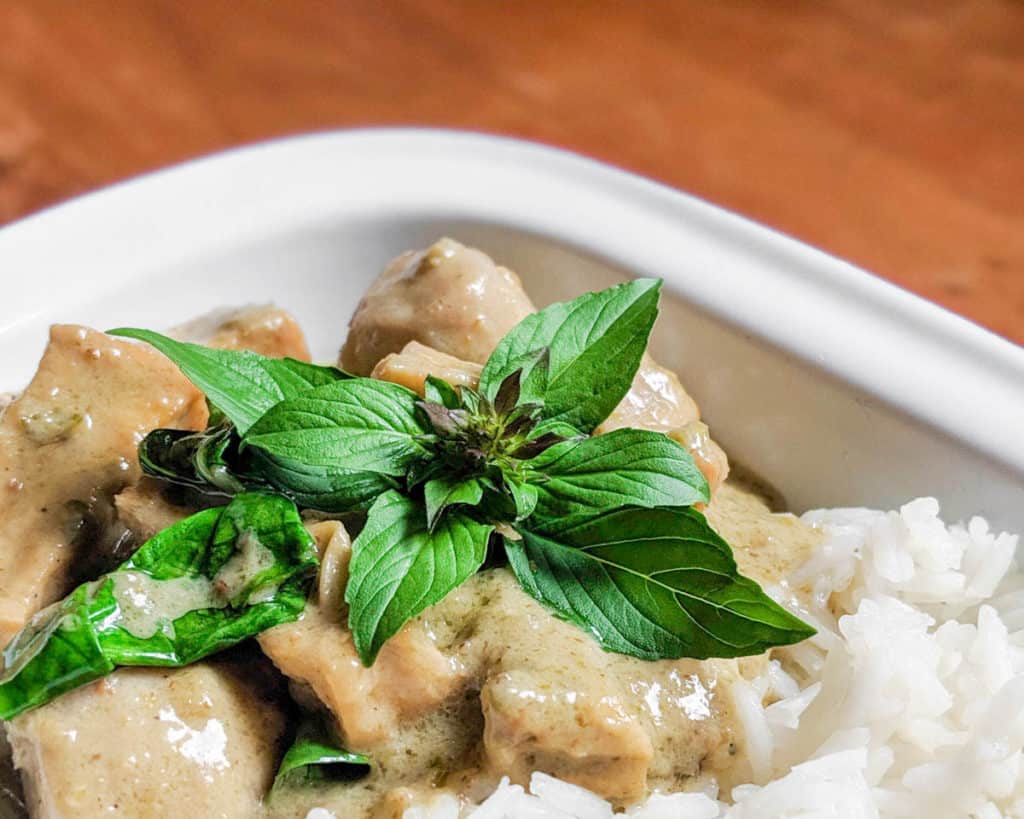
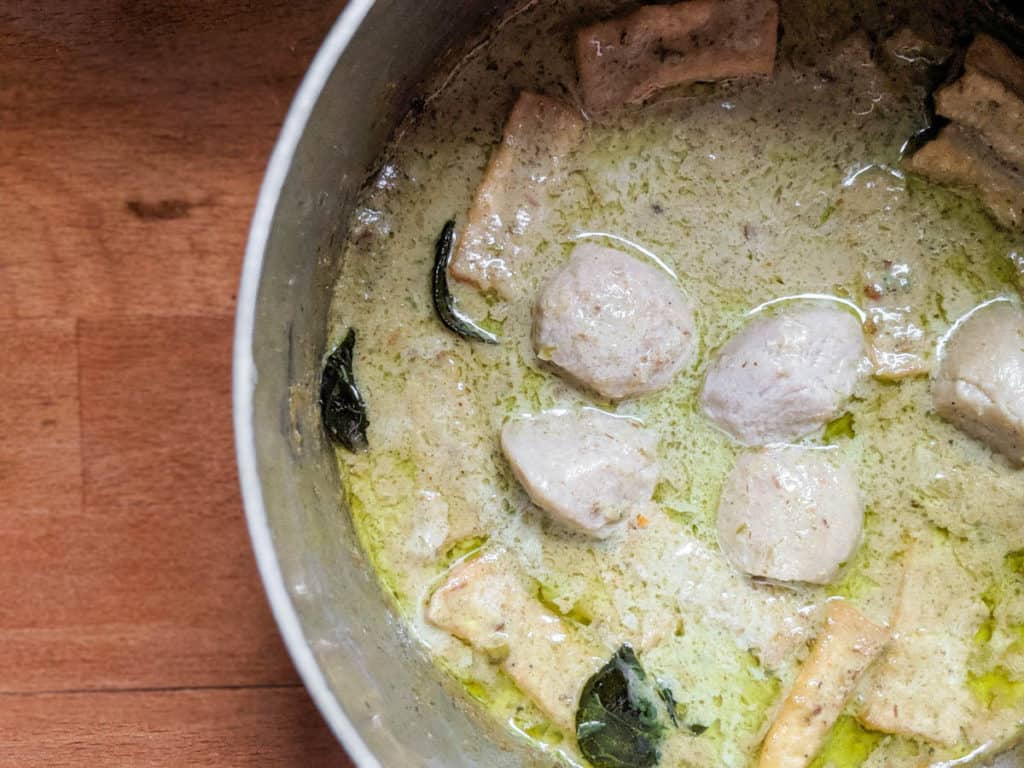
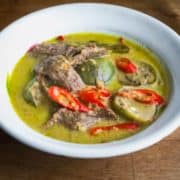


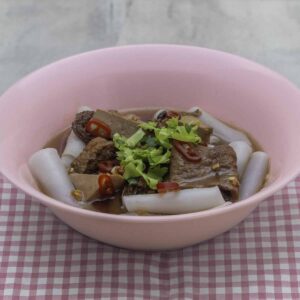
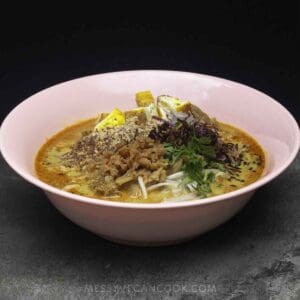
Coco says
Wow, so glad I found your blog! It’s hard to find recipes for authentic Thai vegan curries. I really appreciated all the guides as well… I learned a lot! I was wondering if you have a recommendation for a pestle and mortar? Based on some digging around the internet, it seems some are better-suited to Thai food vs Italian food, for example. Thanks for your time 🙂
Kip says
Hi Coco, thanks for the kind words. As for pestle and mortar you want something that's a very heavy granite style. I have an 8 inch version that I bought in a supermarket in London's Chinatown but you can find them at any Thai market or online (if you are in the US this is a good resource: https://www.templeofthai.com/mortar-pestle/).
I reserve the right to improve malicious and trollish comments.